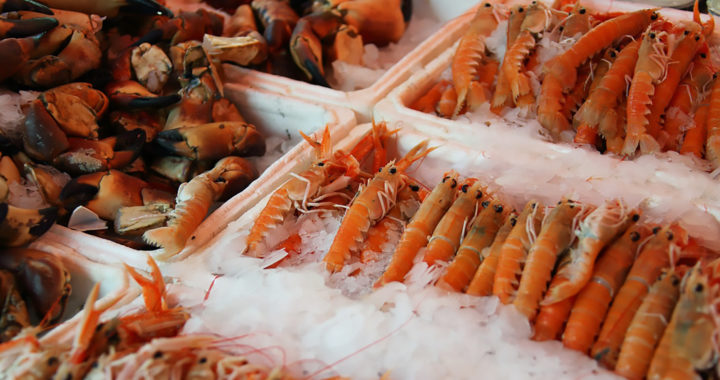Scientists are constantly in the look for new materials that can help develop or improve further technologies related to renewable and alternative energy sources. This is part of the ongoing efforts to reduce dependence on fossil fuels and resolve the climate emergency. Consider shells from shrimps and crabs as examples.
Promising Renewable Energy Technology and Solutions from Shrimp Shells and Crab Shells
1. Cheap Photovoltaic or Solar Cells from Crustacean Shells
Nanostructured solar cells are costly to produce because they require rare and expensive metals such as ruthenium. However, a team of researchers from the Queen Mary, University of London has found a cheaper and more abundant alternative material from shrimp shells.
Chitin and chitosan are derivative materials naturally found in the shells of shrimps and other crustaceans. Researchers Joe Briscoe et al. used a process called hydrothermal carbonization to create the carbon quantum dots using these two materials before coating them with the standard zinc oxide to make solar cells.
Quantum dots are a popular modern structure for producing photovoltaic cells because they are capable of releasing more energy than normal photovoltaic cells.
However, the shrimp-derived solar cell prototypes are still in their earliest stage according to the researchers. The efficiency of these prototypes to produce electricity remains very low. Further reengineering and other technological improvements could perhaps one day catapult these types of solar cells to commercial viability.
2. Sustainable Production of Biogas from Shrimp and Crab Shells
Both shrimp shells and crab shells are byproducts of the seafood industry. They are often disregarded while others repurpose their use for different commercial and industrial applications.
A promising application of these shells is in the production of fuel for renewable energy. These materials can be converted into biogas through anaerobic digestion. This process involves breaking down the organic matter in these materials using microorganisms in the absence of oxygen to produce methane, which can be captured and used as a source of energy.
The use of these organic materials for biogas production can also help to reduce waste and greenhouse gas emissions and can promote sustainable concepts such as the circular economic model, cradle-to-cradle process, upcycling, and natural capitalism.
3. Shrimp and Crab Shells as Battery or Energy Storage
The shells of shrimps and crabs also contain specific organic materials or compounds that can be used as material for producing supercapacitors for batteries or energy storage devices.
Supercapacitors are energy storage devices that can store and discharge electrical energy quickly, and they have a high power density and a long lifespan.
There are different ways shrimp shells and crab shells can be used to make supercapacitors. One approach is to convert chitin, a type of polysaccharide found in crab shells, into a form of activated carbon. Activated carbon is a highly porous material with a large surface area, which makes it ideal for use in supercapacitors.
Another approach is to use the calcium carbonate found in these shells to make a type of material called a pseudocapacitive material, which can also be used in supercapacitors.
Note that more research is needed to fully understand the potential of shrimp and crab shells as a practical and cost-effective source of energy storage material.
FURTHER READINGS AND REFERENCES
- Briscoe, J., Marinovic, A., Sevilla, M., Dunn, S., and Titirici, M. 2015. “Biomass-Derived Carbon Quantum Dot Sensitizers for Solid-State Nanostructured Solar Cells.” Angewandte Chemie International Edition. 54(15): 4463-4468. DOI: 1002/anie.201409290
- Kannan, S., Gariepy, Y., and Raghavan, G. S. V. 2018. “Conventional Hydrothermal Carbonization of Shrimp Waste.” Energy Fuels. 32: 3532-3542, DOI: 1021/acs.energyfuels.7b03997
- Wu, M., Zhang, Y., Xu, L., Yang, C., Hong, M., Cui, M., Clifford, B. C., He, S., Jing, S., Yao, Y., and Hu, L. 2022. “A Sustainable Chitosan-Zinc Electrolyte for High-Rate Zinc-Metal Batteries.” Matter. 5(10): 3402-3416. DOI: 1016/j.matt.2022.07.015

